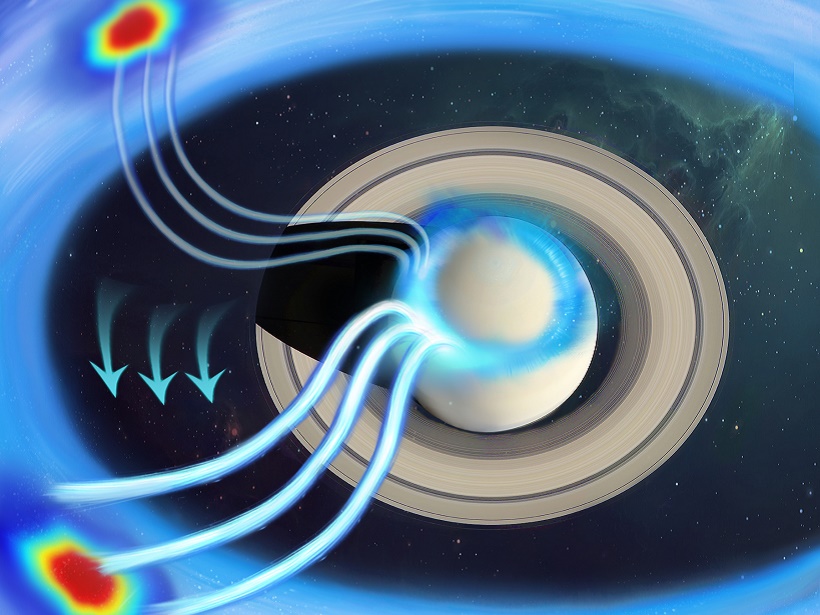Source: Journal of Geophysical Research: Space Physics
Auroral emissions in a planetary polar region manifest the energization of charged particles in the magnetosphere and on the way traveling into the ionosphere and atmosphere. Aurora activity at Saturn are believed to be caused by magnetic reconnections followed by magnetic dipolarization process through which energetic particles are injected in to lower altitude, just like those at Earth. However, the different and mysterious thing is that Saturn’s auroral explosion rotates at 50 to 60 percent of the planetary rotating angular velocity, while terrestrial aurora enhances in the same local time region.
Using measurements from the Cassini spacecraft, Yao et al. [2018] show that magnetic dipolarization can recur after one planetary rotation, and could exist in dayside magnetodisc that has no known precedent with terrestrial or other planets. The subcorotating auroral explosion is due to the rotating electrical currents that communicate the magnetosphere and the ionosphere. These results advance our understanding of planetary magnetosphere-ionosphere coupling dynamics.
Citation: Yao, Z. H., Radioti, A., Grodent, D., Ray, L. C., Palmaerts, B., Sergis, N., et al. [2018]. Recurrent magnetic dipolarization at Saturn: Revealed by Cassini. Journal of Geophysical Research: Space Physics, 123. https://doi.org/10.1029/2018JA025837
—Yuming Wang, Editor, JGR: Space Physics
Text © 2018. The authors. CC BY-NC-ND 3.0
Except where otherwise noted, images are subject to copyright. Any reuse without express permission from the copyright owner is prohibited.

